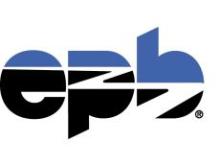Image


Adesta is responsible for 80 percent of EPB's fiber-to-the-home installations, according to Lansford, project manager for Adesta. EPB itself performs the remaining 20 percent, as well as trouble calls. Beginning in June 2009, Adesta ramped up from a one-man office to more than 120 locally hired technicians, and now performs an average of 500 installations per week, or about 100 every day, he said.At the end of October, when the article was written, Adesta had hired some 123 technicians - more than twice as many as they originally expected to need. Perhaps the largest advantage of contracting with a company like Adesta for connecting subscribers is the company's ability to quickly hire more technicians as demand increases. Civil service rules for hiring can hamper hiring when all installs are done in-house. EPB directly employes some thirty installers. Chattanooga closely supervises the training and quality of work from the contracted technicians. Perhaps the biggest downside to hiring outside contractors for this work is the potential for technicians not being invested in the satisfaction of the customer or rushing from install to install to maximize their income. In Chattanooga, they expect technicians to do two installs per day to avoid encouraging shortcuts. In talking with an employee of another muni fiber network, he was amazed at the efficiency of Chattanooga's backoffice processes. The Times Free Press was also impressed:
From a control room in EPB, Abed manages every call that goes out, and knows the location of EPB and Adesta trucks at all times. A computer assigns work based on efficiency, and trouble calls are automatically routed to the nearest available unit.Even in Chattanooga, which has had more of a smooth roll-out than most, getting into apartment buildings (MDU) is difficult:
In addition to servicing homes and businesses, EPB and Adesta have begun rolling out service to apartments as well, he said, addressing a key hole in their service. The reason for the delay, he said, is that installers have to negotiate with the property owners to make the changes to their property before they can offer the service to renters.As we see in community network after community network, the EPB installers go out of their way to help subscribers with great customer service:
"I was blown away," he said. "I had a DVD player that wasn't playing through the TV, and they even spent 10 or 15 minutes trying to hook that up. That wasn't part of their job description." But what customers really want, Lansford said, aside from a trouble-free installation and uninterrupted, speedy service, is a yard sign that tells neighbors, "We've got it!"Looking at the results of customer satisfaction surveys provided by EPB, they are making a great impression on subscribers. Consider this: 97% of respondents either somewhat agreed or strongly agreed that "The technician(s) who installed my EPB Fiber Optics services arrived in the expected timeframe." That isn't your ordinary cable or telephone company! The worst level of satisfaction was the mere 93% who somewhat agreed or strongly agreed that "The technician(s) provided me with sufficient instructions I need to use my services." EPB has already reacted to those numbers by increasing the methods subscribers can use to learn about their services. For instance, EPB is making instructional videos and not only putting them on the Internet, but also on Video-on-demand. I have long argued video-on-demand is a key tool for starting to teach people about the technology they use on a daily basis. Communities aspiring to have a world class network should pay attention to Chattanooga's approach.
